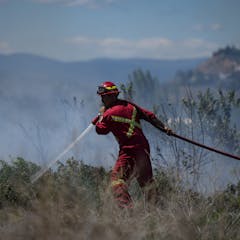
Articles on Weather
Displaying 1 - 20 of 436 articles

The current cold springtime weather explained by a meteorologist.

Some parts of the Gulf experienced 18 months of rain in a single day.

Flash floods are getting more common, as warmer air can hold more moisture. But there are other changes leading to more inland flooding on the east coast.

In the lead-up to the 2024 federal budget, there was hope for investments in water management and water-related infrastructure. Those hopes were misplaced.

The University of Cape Town’s new report on the impacts of climate change in South Africa found that heatwaves and water stress will affect jobs, deepen inequality, and increase gender-based violence.

Weather forecasting is improving at a great rate, even though climate change could be making it tougher.

Why the weather can be sunny one minute then rainy the next.

You might be wondering: what is a ‘Black Nor'easter’, what’s causing all this rain and does it have anything to do with climate change? Here’s what you need to know.

Declining precipitation, climate change and governance failures will drive water flow scarcity in 2024 with serious implications across Western Canada.

Public concerns for real estate value, and a focus on the self, make flood risk maps unpopular. However, these concerns should not dissuade governments from providing resources we can all trust.

Cold snaps can affect everyday services and infrastructure, putting lives at risk.

There are an infinite number of paths an ice crystal can take before you touch it.

Global warming is melting away an iconic cornerstone of Canadian culture — outdoor skating.

It’s getting warmer, but there are bumps on the way.

Dogs might have furry coats, but they can still get cold when the temperature drops.

The new threat from cyclones can come from behind you – flooding from more intense rainfall.

We crave certainty in our weather forecasts. But that’s only possible for big weather events such as cyclones and major storms. Everything else is probability.

Canada, and particularly the Canadian Arctic, is warming at a considerably higher rate than the global average. The consequences for Canada could be devastating.

A heatwave in 2022 redefined scientific expectations of the Antarctic climate. Now the global community must prepare for what a warmer world may bring.

These tiny songbirds have extraordinary memories for the tens of thousands of spots where they hide food. But that doesn’t help when heavy snow blocks their access.





